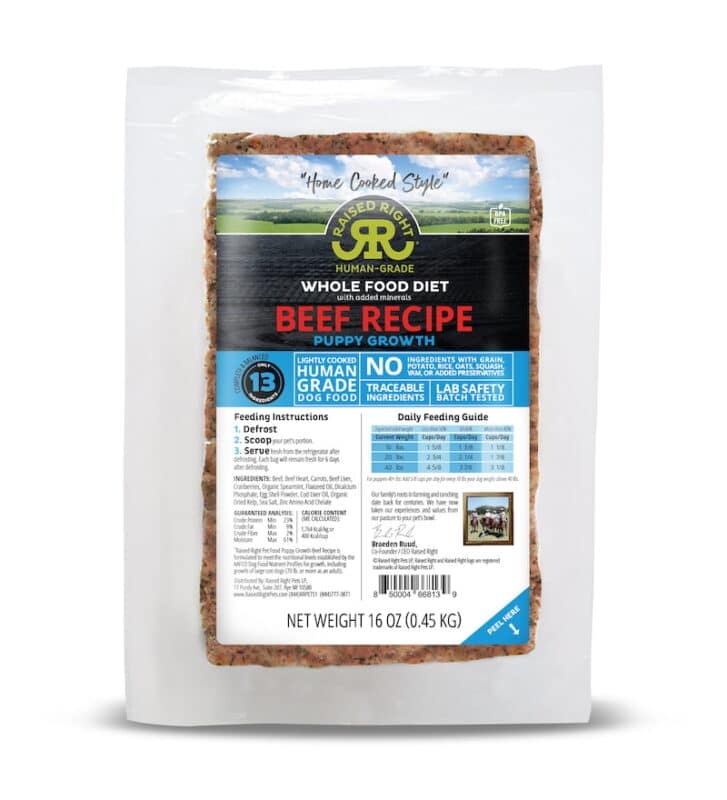No products in the cart.
Dog food is a natural, healthy addition to your dog’s diet. It can help him lose weight and increase his nutrient intake, preventing him from getting sick. However, it’s not the only way to feed your pup. There are many types of dog food on the market, making it difficult to know where to buy the extension dog food in 2023. In this article, you will learn about the different types of dog foods available for purchase and their pros and cons. You will also find advice on where to buy them in 2023, so you don’t have a choice but a quality product too!
What is a Healthy Dog Food?
Healthy dog food is formulated to provide your dog with the essential nutrients he or she needs to stay healthy. It is also recommended to stay away from sugar and carbohydrates. These are not necessary for proper muscle building and growth. However, they will help you maintain weight and reduce your risk of diabetes and heart disease.
Nutritionists recommend eating protein first in the morning to help build and repair your muscles. Additionally, you should try to consume foods referred to as “good fats.” These are found in food such as olive, avocado, salmon, and oily fish.
Foods that are high in antioxidants are also recommended. These foods include kale, spinach, berries, and dark green vegetables.
All-Purpose Dog Food
All-Purpose dog food is a general term for foods containing meat and vegetable components. This makes them a good option if you’re trying to lose weight or cut down on your carbs. They are also a great way to get your needed fats. However, it’s important to know that certain fats are better than others. Some are better for your skin and health. There are so many healthy fats to choose from that it can be hard to decide which one to start with. Some of them have been found to have a positive impact on health, while others have been found to have no such benefits.
With all the options out there, the best thing you can do is start with the ones that have been found to have the most benefits. Some of them include:
Saturated Fat:
Saturated fat is one of the most common healthy fats found in foods. It is found in dairy, meat, fish, eggs, and plants. When you incorporate saturated fat into your diet, you offer your body a much-needed stress reliever.
Grain-Free and Gluten-Free Dog Food
Some of the other common reasons for which dog food is labeled “grain-free” or “gluten-free” are:
1-Pregnant or nursing dogs
2-Immune-compromising conditions like SLE, Cushing’s disease, or allergies
3-Nutritionally complete & balanced dog foods
4-Providing extra calcium to support healthy bone density
5-Providing adequate amounts of essential fatty acids, protein, & vitamins & minerals
6-Helping dogs with allergies symptoms like itchy skin and coat
7-Helping dogs with competitive eaters like pugs or Chihuahuas lose weight
8-Helping pugs and Chihuahuas lose weight naturally
9-Providing better skin & coat conditions for dogs with diabetes
10-Helping reduce the risk of heart disease, high blood pressure, and diabetes in older dogs
11-Helping reduce the risk of urinary tract infections in older dogs
12-Helping reduce the risk of eye problems in dogs like glaucoma and age-related macular degeneration
13-Helping reduce the risk of high cholesterol in dogs
14-Supporting healthy joints & bones in older dogs
15-Helping reduce the risk of Addison’s disease in older dogs
Low-Fat, High-Calorie Dog Food
Some pet owners worry about the “calories” in a dog’s diet. However, the calories in a dog’s diet come from protein, so if he’s getting enough protein, he doesn’t need to consume a high-fat diet. Fatty dogs tend to have more skin folds (like those found on the side of your dog’s face), which can result in skin problems like dry, cracked skin. Similarly, too much fat can cause your dog’s “doggy” skin (prone to mats) to become flat, leading to skin atrophy.
Keep in mind that not all fats are created equal. Some are better for you than others. Avoid treats that are high in fat. Instead, focus on providing your dog with quality food made from natural ingredients. UV light is also known to cause skin damage and wrinkles, so avoid exposing your dog to the sun.
Kidney and Liver Disease Dog Food
As your dog gets older, he may develop kidney or liver disease. This can be due to various factors, such as advanced age, habits such as allowing him to eat processed foods, or a diet too low in phosphorus and potassium. To help prevent these conditions, you may wish to feed your dog a special diet. You may want to avoid foods high in starch (a type of carbohydrate) and sugar, as these will cause high blood glucose levels and make it harder for your body to use protein for energy. Foods high in protein include poultry, seafood, lean beef, eggs, and cheese.
You should also avoid foods with a high glycemic index. Foods with a high glycemic index are high in carbohydrates and sugars and cause a rapid rise in your blood glucose levels. This is good for your body, as it provides a quick energy source. However, foods with a high glycemic index also tend to have a low satiety index, meaning that you continue to eat them even after you have eaten your fill.
Conclusion
Dogs are very similar to people in that they can also become picky eaters. Some dogs will just eat dog food because they enjoy it. Others might have special dietary requirements and need a special diet. Whatever the reason, you must be aware of what foods your dog might enjoy and which ones he should avoid. In 2022, there are a lot of options when it comes to buying health-extension dog food. You should research the product carefully and ensure it fits your dog’s specific needs and wants.


